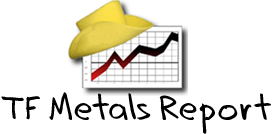 As some of you may recall, I published an article here at TFMR one year ago in August of 2013 titled The Paper Armageddon Portfolio. In this piece I outlined a rationale for investing in certain sectors from a ‘hard assets/tangible value’ perspective that would reflect the TFMR understanding of the ongoing Keynesian process of QE, artificially low interest rates, market manipulation, and dollar devaluation. Within those sectors, I selected multiple stocks from companies I felt would outperform the sector as a whole. The general idea was to come up with a list of companies who were poised to not only survive the current debt creation/paper ponzi economy, but would potentially offer solid returns in the coming paradigm where tangible and productive assets will be worth far more than today’s paper promises. So one year later I thought it would be worthwhile to check back in on this investing thesis to see how these picks and sectors fared and to discuss what we might learn from their performance over the last year.
As some of you may recall, I published an article here at TFMR one year ago in August of 2013 titled The Paper Armageddon Portfolio. In this piece I outlined a rationale for investing in certain sectors from a ‘hard assets/tangible value’ perspective that would reflect the TFMR understanding of the ongoing Keynesian process of QE, artificially low interest rates, market manipulation, and dollar devaluation. Within those sectors, I selected multiple stocks from companies I felt would outperform the sector as a whole. The general idea was to come up with a list of companies who were poised to not only survive the current debt creation/paper ponzi economy, but would potentially offer solid returns in the coming paradigm where tangible and productive assets will be worth far more than today’s paper promises. So one year later I thought it would be worthwhile to check back in on this investing thesis to see how these picks and sectors fared and to discuss what we might learn from their performance over the last year.
The article I originally posted is here, but to summarize, I outlined four sectors oriented around hard assets and/or the real-world production of tangible goods. The four I chose were 1. Farmland, 2. Timber and grazing, 3. Energy and commodities, and 4. Railroads (which I surmised would be poised to grow in a high fuel costs/post-Petrodollar environment, and to take market share from the currently dominant but fuel inefficient trucking industry).
Let’s assume that, as I recommended in the article, Turdites looked at this list and spent a few weeks doing their own research and due diligence on these companies, then chose to invest a few weeks later. Here is a breakdown of the 1 year performance of these individual stocks I chose within these sectors in my original list. Each entry shows ticker symbol, price change over the last year, % gain, dividend yield, then what a $10,000 investment in that stock would be worth today, and finally how much dividend one would have been paid:
This post was published at TF Metals Report on August 29, 2014.

 Follow on Twitter
Follow on Twitter
Recent Comments